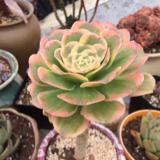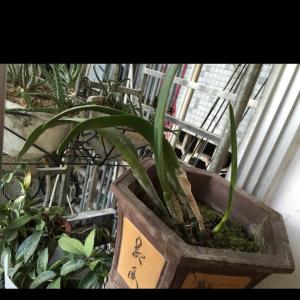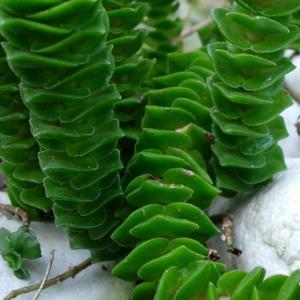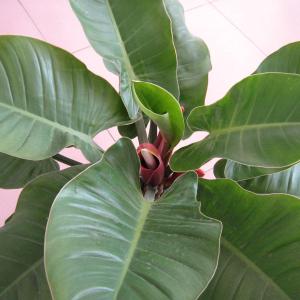文章
lenny
2017年02月16日


One of the most popular herbs is Ocimum basilicum commonly called sweet basil. Often called the ‘king of herbs,’ basil can be grown indoors or out. Sweet basil has inch-long, oval-pointed, dark green leaves and a clove-pepperish odour and taste. Sweet basil makes a handsome, bushy small plant, growing to a foot or more indoors. A purple-leafed variety, ‘Dark Opal’ is decorative, makes a lovely houseplant, and is equally useful in cookery. Do not let basil bloom, or it will go to seed. Instead, pinch out the plant tops and they will grow into compact little bushes.
Basil is an annual and grows 12 – 24 inches (30 – 60 cm) as the height varies according to the variety. Cultivation requirements for growing basil: full sun; light, well-drained, nutrient rich, slightly acidic soil; frequent watering (don’t waterlog); will not tolerate cold; pinch off flower stalks for a longer season of leaf production.
Basil can be easily started from seed or can be brought indoors at the end of the growing season. If you are bringing basil indoors, choose the most robust plants. Before the first frost, dig them out of the garden and pot them up in fresh potting soil. Basil can also be grown in pots outdoors and treated the same way when bringing them in for winter. Check for insects and if there is an infestation, spray with a soap and water spray. Gradually reverse the hardening off process by keeping the pots out of direct sunlight for about a week. The plants will become acclimatised to the lower light conditions they will experience indoors. Bring them inside and provide the conditions they need to continue growing.

Basil requires at least five hours of sunlight a day to stay healthy and flavourful. If you are growing basil on the windowsill, turn regularly to ensure every side receives light.
Don’t let basil leaves touch the cold glass. Basil grows even better under fluorescent lights in the winter. Hang the lights 6 inches (15 cm) from plants and leave lights on for 14 hours a day.
There are many cultivars of basil. Two that are particularly popular are:
O. basilicum ‘Dark Opal’- only herb to win the All American Award of Excellence – can be used the same as sweet basil;
O. basilicum ‘Citriodorum’- strong lemon scent – nice for tea and with chicken and fish.

In the garden, basil can be planted with tomatoes as it helps to overcome both insects and disease. Basil also repels flies and mosquitoes. In the kitchen, use basil in tomato dishes (both raw and cooked), pesto, sauces, salad dressings, soups, fish dishes, mushroom dishes, egg and rice dishes, mixed with other herbs, omelettes, pasta dishes, vegetables such as carrots, eggplant, cabbage, squash, and zucchini. Use fresh leaves in salads and add fresh leaves to vinegar and extra virgin olive oil. Basil can be used fresh, frozen, or dried. Use basil with discretion, as it is one of the few herbs that increase in flavour when heated..
1
0
文章
Andy
2016年12月19日

Obtain a Pineapple
From the local grocery store, choose a mature pineapple that has healthy, firm, green leaves (not yellow or brown) and with a fruit skin that is golden brown (not too green). Actually, I'd recommend growing two pineapples in the not unlikely event that one of them dies. At the very least you can pick the healthiest of the two plants to nurture to full growth.
Inspect the base of the leaves for small grayish spots which are scale insects. If these are found, the crown should be discarded and one selected which is free of these insects. Try to find one that is ripe but not overripe. Test for ripeness by gently pulling on a leaf. If it pops out with ease, the fruit is overripe.
Prepare the Crown
Grab hold of the entire top set of leaves. Twist hard and it will come out with a bit of stalk. (If you cut the top off you will need to remove all of the excess fruit flesh, otherwise it will only rot and may kill the whole plant). Any adhering flesh should be trimmed off its base to prevent rotting after planting. After trimming, carefully slice small, horizontal sections from the bottom of the crown until you see root buds that appear as small dots or circles on the flat, cut surface (see picture). Remove as little tissue as possible to avoid cutting into young stem tissue.
Next, strip off some of the lower leaves, exposing up to about an inch of the base of the crown (the stalk will root but the leaves will rot - see photo). They will come off in sort of a spiral fashion. The idea is to bare the stalk. The small brown-colored bumps below the leaf scars are root primordia (baby roots waiting to grow) and there may even be a few short roots at the base of the crown (the picture at right shows a crown with a lot of roots). Though these won't be the roots that will grow in the next step, try not to damage these.
After trimming and stripping, let the crown dry out for a couple days before going to the next step. This will permit the cut end and the leaf scars to heal and prevent rot.<img src="1000060347_24277_1482134060.jpg">Root the Crown
There are various ways to do this, but I have found after trying several methods, that the simplest is the most effective. Place the crown in a clear glass of water and change out the water every few days. Place the crown away from any temperature extremes (heating or cooling vents/hot south-facing windows). On top of the refrigerator will work. In three weeks you'll see healthy root growth as illustrated in the pictures at right. You're now ready to plant the crown. As an aside, I've been told that if you use a dark colored glass, like a red plastic cup for example, you'll get better rooting. However I haven't tried this myself.<img src="1000060348_24277_1482134060.jpg">Plant the Crown
Once roots appear, plant the pineapple in a fast draining potting soil such as a Bromeliad or Cactus Potting Soil mixed with a third perlite. An eight-inch porous clay pot with bottom drainage is ideal. Layer about two inches of stones in the bottom of the pot prior to putting in the soil/perlite mix. The picture to the left illustrates the materials needed (the two pottery shards in the front are to put over the drainage holes; these came from an extra clay saucer that I broke up).
The first step is to cover the drainage hole with the pottery shard. Second, put in a layer of stones followed by the soil and perlite mix. Finally, plant the crown and water it thoroughly prior to placing it in a window or some other sunny place. You can see the sequence in the pictures to the right (the inner leaves of the pineapple on the left are easily pulled out which doesn't bode well for the plant. Only time will tell which is a good example of why it's good to root two plants in case one dies).
In terms of watering, the soil should always be slightly moist; not wet (which will promote rot) and not dry. It will take six to eight weeks for the stalk to really start sending out strong roots. Do not rush this process or fertilize at this point.
After about two months, the pineapple should be supporting itself as a new plant. Gently tug on the plant to see if new roots have formed. If they are present, they will resist your tug. If absent, the top of the pineapple will pull from the soil revealing the absence of new roots. If there are no new roots, replace the pineapple top in the soil and wait longer. If the base looks like it is rotting, start again with a new pineapple top, root it again as above and then use fresh potting soil. Repeat the process, but be sure not to over water.
At this point you should notice that the original leaves of the pineapple will begin to die and turn brown, with new leaves beginning to grow at the center. Over the course of the following year, remove the original leaves as they die. During this time the pineapple should be watered no more than once a week.
If roots have developed with the new leaf growth, it is a sign that things are going well.<img src="1000060349_24277_1482134061.jpg">After one full year of growth, repot the plant.
Below you can see these two plants one year later. Three lessons I've learned:
1) don't give up on your plant even when things are looking grim (the pictures on the right are of one of the plants that had rotted in the center; you can see two brand new sprouts that formed along side the original plant.)
2) my plants rooted indoors, however real growth didn't begin until I took them outside in the spring. With the next growing season they'll be repotted as instructed below.
3) grow two crowns as one will likely not be as strong as the other. Then you can repot the healthier one. You may also notice that I clipped the tips off of the plants as I think I left them outside too long, and the cold turned their tips brown.<img src="1000060350_24277_1482134061.jpg">
From the local grocery store, choose a mature pineapple that has healthy, firm, green leaves (not yellow or brown) and with a fruit skin that is golden brown (not too green). Actually, I'd recommend growing two pineapples in the not unlikely event that one of them dies. At the very least you can pick the healthiest of the two plants to nurture to full growth.
Inspect the base of the leaves for small grayish spots which are scale insects. If these are found, the crown should be discarded and one selected which is free of these insects. Try to find one that is ripe but not overripe. Test for ripeness by gently pulling on a leaf. If it pops out with ease, the fruit is overripe.
Prepare the Crown
Grab hold of the entire top set of leaves. Twist hard and it will come out with a bit of stalk. (If you cut the top off you will need to remove all of the excess fruit flesh, otherwise it will only rot and may kill the whole plant). Any adhering flesh should be trimmed off its base to prevent rotting after planting. After trimming, carefully slice small, horizontal sections from the bottom of the crown until you see root buds that appear as small dots or circles on the flat, cut surface (see picture). Remove as little tissue as possible to avoid cutting into young stem tissue.
Next, strip off some of the lower leaves, exposing up to about an inch of the base of the crown (the stalk will root but the leaves will rot - see photo). They will come off in sort of a spiral fashion. The idea is to bare the stalk. The small brown-colored bumps below the leaf scars are root primordia (baby roots waiting to grow) and there may even be a few short roots at the base of the crown (the picture at right shows a crown with a lot of roots). Though these won't be the roots that will grow in the next step, try not to damage these.
After trimming and stripping, let the crown dry out for a couple days before going to the next step. This will permit the cut end and the leaf scars to heal and prevent rot.<img src="1000060347_24277_1482134060.jpg">Root the Crown
There are various ways to do this, but I have found after trying several methods, that the simplest is the most effective. Place the crown in a clear glass of water and change out the water every few days. Place the crown away from any temperature extremes (heating or cooling vents/hot south-facing windows). On top of the refrigerator will work. In three weeks you'll see healthy root growth as illustrated in the pictures at right. You're now ready to plant the crown. As an aside, I've been told that if you use a dark colored glass, like a red plastic cup for example, you'll get better rooting. However I haven't tried this myself.<img src="1000060348_24277_1482134060.jpg">Plant the Crown
Once roots appear, plant the pineapple in a fast draining potting soil such as a Bromeliad or Cactus Potting Soil mixed with a third perlite. An eight-inch porous clay pot with bottom drainage is ideal. Layer about two inches of stones in the bottom of the pot prior to putting in the soil/perlite mix. The picture to the left illustrates the materials needed (the two pottery shards in the front are to put over the drainage holes; these came from an extra clay saucer that I broke up).
The first step is to cover the drainage hole with the pottery shard. Second, put in a layer of stones followed by the soil and perlite mix. Finally, plant the crown and water it thoroughly prior to placing it in a window or some other sunny place. You can see the sequence in the pictures to the right (the inner leaves of the pineapple on the left are easily pulled out which doesn't bode well for the plant. Only time will tell which is a good example of why it's good to root two plants in case one dies).
In terms of watering, the soil should always be slightly moist; not wet (which will promote rot) and not dry. It will take six to eight weeks for the stalk to really start sending out strong roots. Do not rush this process or fertilize at this point.
After about two months, the pineapple should be supporting itself as a new plant. Gently tug on the plant to see if new roots have formed. If they are present, they will resist your tug. If absent, the top of the pineapple will pull from the soil revealing the absence of new roots. If there are no new roots, replace the pineapple top in the soil and wait longer. If the base looks like it is rotting, start again with a new pineapple top, root it again as above and then use fresh potting soil. Repeat the process, but be sure not to over water.
At this point you should notice that the original leaves of the pineapple will begin to die and turn brown, with new leaves beginning to grow at the center. Over the course of the following year, remove the original leaves as they die. During this time the pineapple should be watered no more than once a week.
If roots have developed with the new leaf growth, it is a sign that things are going well.<img src="1000060349_24277_1482134061.jpg">After one full year of growth, repot the plant.
Below you can see these two plants one year later. Three lessons I've learned:
1) don't give up on your plant even when things are looking grim (the pictures on the right are of one of the plants that had rotted in the center; you can see two brand new sprouts that formed along side the original plant.)
2) my plants rooted indoors, however real growth didn't begin until I took them outside in the spring. With the next growing season they'll be repotted as instructed below.
3) grow two crowns as one will likely not be as strong as the other. Then you can repot the healthier one. You may also notice that I clipped the tips off of the plants as I think I left them outside too long, and the cold turned their tips brown.<img src="1000060350_24277_1482134061.jpg">
6
3
















